The Web3 Stack: A Conceptual Framework

As the Web3 space continues to grow, contextualising the various technologies has become an increasingly demanding task. In this series of articles, we will start with a high level overview of the various concepts and eventually arrive at the use cases which various Web3 protocols are trying to solve.
This article is the second in the series framing the concepts within each distinct layer of the Web3 stack. The articles are divided into 3 levels of increasing detail:
L1 — Overview
An overview of the different layers and how they enable Web3 functionality through building on top of each other:
L2 — Concepts
The key concepts within each layer that informs business and technical decisions. This highlights the different categories of Web3 technologies:
- A Conceptual Framework
L3 — Implementations
Understanding the difference between various protocol/standard implementations and how they relate to each other. The focus will be on Web3 lego blocks and its affects on value flows:
- Transaction Settlement
- Assets
- Web3 Primitives
- Optimisers (WIP)
A Conceptual Framework
Analysis: Making sense of blockchain data
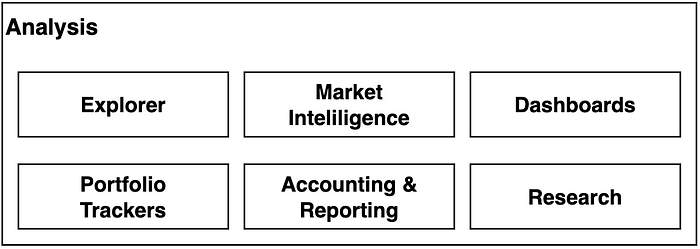
- Explorer: Applications which enable users to search for transactions, blocks, addresses, smart contracts, and other related blockchain data. Explorers can be specific to a particular chain or aggregate data across different chains. Majority of blockchain explorers will archive the latest blockchain data on their own databases in order to optimise query performance. Other additional service include API queries, contract verification, gas tracking, etc.

- Market Intelligence: Supplementing blockchain data with price and market data. By adding a monetary dimension to blockchain assets, such applications enable basic value flows and comparisons to be made.

- Dashboards: Contextualising blockchain data through the creation of preset or custom dashboard views. While the majority of data would be on-chain data, external data might be integrated depending on the scope of the particular dashboard.

- Portfolio Trackers: One stop applications to keep track of all coin and token holdings across multiple-chains. Trackers range from basic holdings upload to tracking based on accounts. Of note, certain trackers also enable tracking of liquidity positions across various DeFi protocols.

- Accounting & Reporting: Tools enabling users to meet the financial reporting requirements surrounding possession and movement of cryptocurrencies.

- Research: Third party teams which provide analysis and future guidance on developments in the Web3 space. Data is aggregated across various on and off-chain sources and range from market data to technical developments.
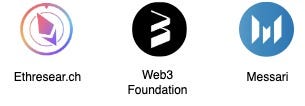
Wallets: Self-custodial private keys

- Hot Wallet: Wallets which are connected to the internet. Hot wallets store the private keys encrypted on applications which are web-based or installed on desktop/mobile devices. The added risks of having keys possibly exposed on the internet is counterbalanced by the convenience of managing keys and transaction signing.

- Cold Wallet: Wallets which are kept offline or air-gapped from the internet. Cold wallets can be as basic as a paper wallet where the private key is written on or more complex implementations which takes advantage of hardware security modules. Hardware wallets enable transactions to be signed without the private keys ever being exposed to the internet.
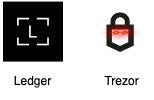
Optimisers: Automated returns maximisation

- DEX Aggregators: Aggregates data across decentralised exchanges in order to arrive at the best parameters for a trade. DEX aggregators are able to route trades across various DEXes without the user having to interact with the underlying DEX. DEX aggregators can implement more advanced strategies to optimise demand side factors.

- Yield Vaults: Maximises yield generation by automatically implementing supply side strategies across various DEXes and lending protocols. Users are usually required to lock their liquidity positions with the vault which will then compound the yield based on the strategy defined in the smart contract.

- Governance Bribes: Amplifies the voting power of a user’s token holdings. As governance decisions for most Web3 protocols are based on a one-token-one-vote model, such bribes enable coordinated exploitation of protocol value flows (i.e. rewards) to maximise individual returns. Current implementations require users to lock their tokens with the protocol with a time decay function that determines voting weight.

- Maximal Extractable Value: Strategies to realise a risk-free profit from front-running pending network transactions. As transactions are only finalised after being mined in a block, MEV takes advantage of the time premium of publicly available pending transactions in order to reprioritise transactions.

Web3 Primitives: Mix-and-match decentralised applications
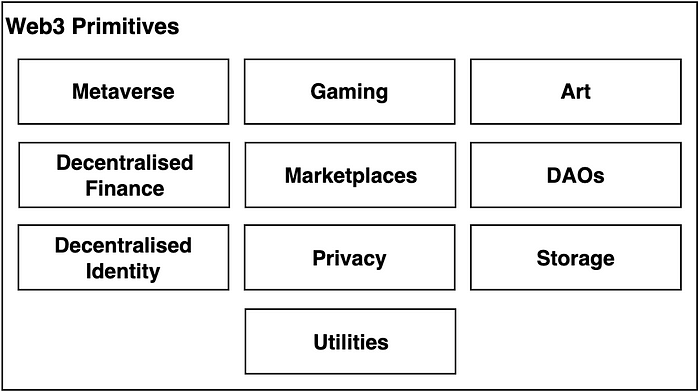
- Metaverse: Shared virtual worlds where users are able to immerse themselves through their digital avatar and have verifiable ownership over virtual items (e.g. land, assets, etc.). Due to the provenance and portability of digital assets in Web3, Metaverse assets are able to be transferred or traded much like real world assets.

- Gaming: Games which are built atop of Web3 infrastructure thereby enabling digital ownership of in-game assets and characters. Most games will implement their own tokenomics which usually involves an in-game currency that can be traded in markets external to the game. Consequently, there is implicit real world monetary value for all game actions which further blurs the line between game and real-world value.

- Art: Digital art (visual & audio) which is tokenised on the blockchain thereby enabling efficient transfer of ownership and trading. Additional program logic can be layered on top of art tokens which enables new use cases such as automated artist royalties for all future resales. Ecosystems are being built on top of the exclusive ownership of art tokens opening new value channels (e.g. movies where a character is based on a particular art token character).

- Decentralised Finance: Financial services for blockchain assets without the need of a middlemen (i.e. trades, lending, derivatives, etc.). As assets are self-custodied and collateralised, participation in DeFi does not require an approved identity. Token standards and modularity of DeFi protocols incentivise the creation of open financial rails.

- Marketplaces: Applications which facilitates peer-to-peer trading of blockchain assets (e.g. art, domains, virtual worlds). Assets traded via marketplaces are usually non-fungible and therefore price discovery becomes a differentiating factor.

- Decentralised Autonomous Organisations: A collectively-owned, blockchain-governed organization working towards a shared mission. Governance rules which define organisational processes are defined in smart contract code. DAOs usually implement a smart contract that acts as a treasury that also defines spending rules based on governance votes.

- Decentralised Identity: Self sovereign identity that emphasises individual ownership of personal data. Much like in real life, relationships are built from the ground-up with no middlemen required to operate a digital identity. In this model, personally identifiable data is selectively disclosed and leased to a service provider. This lease model, as opposed to custodial model, enables a user’s digital identity to be portable and verifiable.

- Privacy: Non-custodial privacy solutions which aim to obscure the provenance of blockchain assets. This is done at the application level as opposed to transactional privacy at the transaction settlement layer.

- Storage: Decentralised storage solutions which enable data to be reliably and securely stored across a network of nodes. Such solutions are required as blockchain memory space is relatively expensive and hence not ideal for storing large data sets. Various technical solutions enable distributed storage which is secured through protocol tokenomics.

- Utilities: Protocols which optimise the Web3 user experience. Such protocols are not strictly necessary for the ecosystem to function but provides significant value add. This can take the form of improved readability or more efficient data querying.

Oracles: External data for smart contracts


- Software: Data sourcing from online sources. This data can be Web3 native (i.e. fully described on a chain) or provided by data providers who have their own databases.
- Hardware: Devices which translate real world data into digital data for ingestion by smart contracts. Trust assumptions have to be extended out to the hardware level.
- Consensus: Data sourcing through consensus. This can be achieved through the creation of prediction markets or non-financially via voting processes.
Assets: The units of trade

- Tokens: Tokenised digital assets which are created on an existing blockchain. Token smart contracts define the asset as well as the logic of how it can be used. Adhering to token standards such as ERC20/721 enable interoperability of tokens across decentralised applications on the same blockchain. Critically, any token transactions are settled by the underlying blockchain.

- Liquid Staking: Protocols which adds flexibility to cash flows by enabling users to utilise the value locked in staked funds on a Proof-of-Stake blockchain. Most implementations will pool user coins to be staked on the protocol. In exchange, users receive a token representing their share of the staked funds (and rewards) which can then be utilised for other purposes.

- Coins: Digital assets which are native to their own blockchain. Coins are defined at the protocol level and are used to fuel transactions on the network. Coins will usually require a token wrapper in order to safely interoperate with decentralised applications.

Cross-chain Bridges: Moving value between chains


- Burn & Mint: Assets are burned on the original chain and minted in the same quantity on the new chain.
- Lock & Mint: Assets are locked within a smart contract on the original chain and a wrapped version of the token is minted on the new chain.
- Lock & Unlock: Assets are locked on the original chain with the corresponding amount being unlocked from a liquidity pool on the new chain.
Transaction Settlement: Finality of transactions
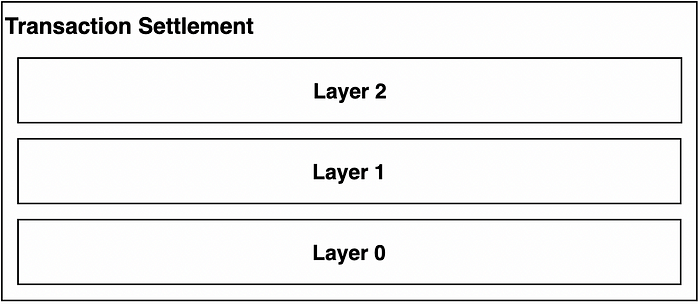
- Layer 0: Network infrastructure which enables cross-chain communication thereby enhancing interoperability across blockchains.

- Layer 1: Networks which define their own set of rules for achieving consensus at the blockchain level. As network state is finalised on this layer, decentralisation and security are usually a priority for layer 1 protocols.

- Layer 2: Protocols which aim at solving the scalability of Layer 1 solutions by off-loading network processing to a separate chain but writing the final state back to Layer 1. Through cryptography, Layer 2 solutions are able to optimise data processing requirements while also possibly providing additional privacy guarantees.

Nodes: Physical machines running Web3 software

- Light Weight: Nodes which do not store a copy of the blockchain but are still able to communicate with the blockchain by relying on full nodes. Light weight nodes are able to query as well as broadcast transactions but do not participate in the consensus process. Not having to store blockchain historical data enables light weight nodes to be efficiently hosted on general consumer devices.
- Full Nodes: Acts as a server in a decentralised network. Stores a copy of the blockchain and is responsible for updating its own copy based on participation in the protocol consensus process. Full nodes enable efficient querying of local data while serving as an important state validator at the network level.
Thanks for staying till the end. Would love to hear your thought/comments so do drop a comment. I’m active on twitter @AwKaiShin if you would like to receive more digestible tidbits of crypto-related info or visit my personal website if you would like my services :)



































